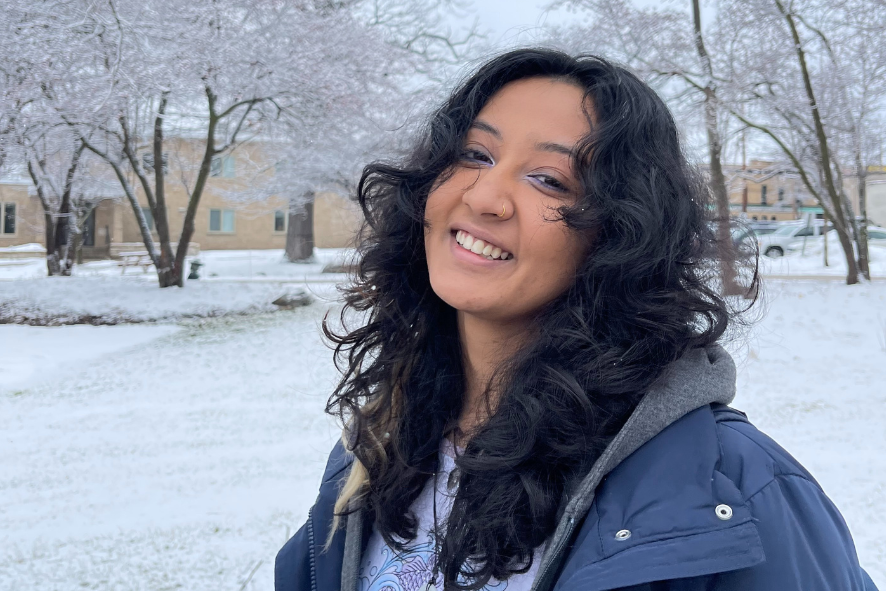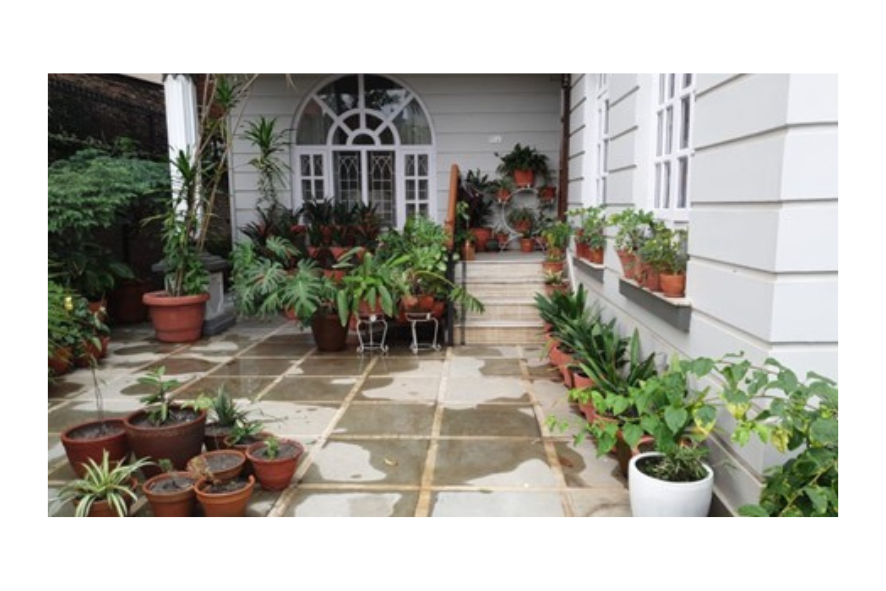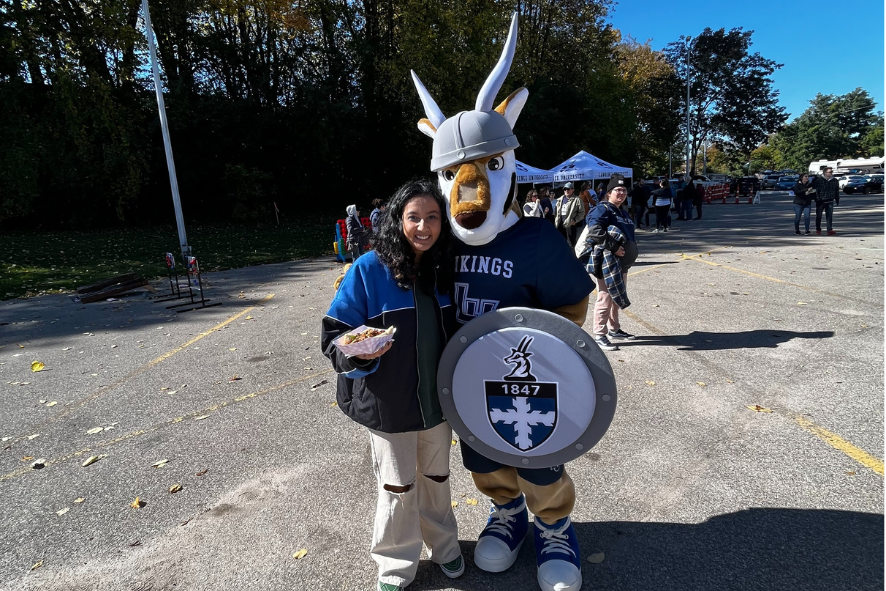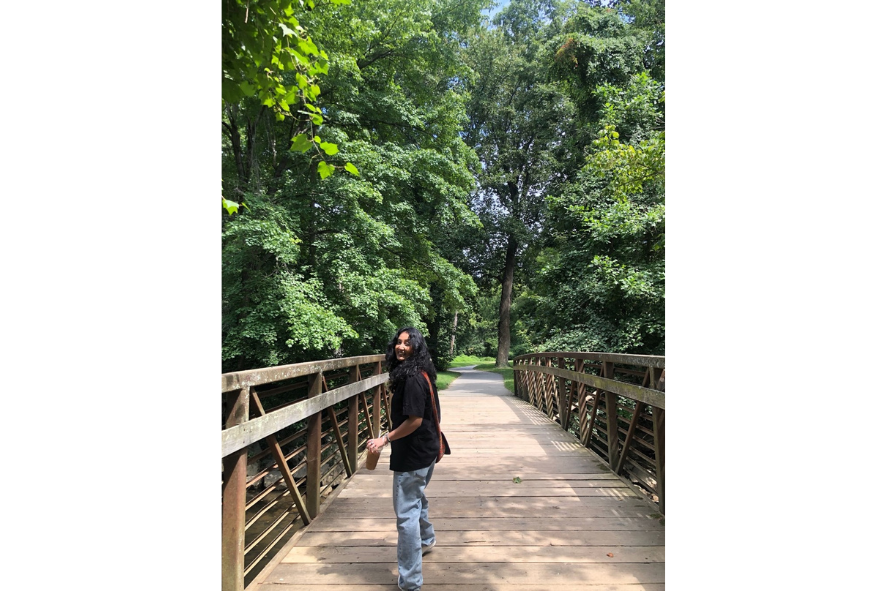Join us in welcoming the Natural Resources Foundation of Wisconsin’s full-time volunteer team member, Tee Karki!
We sat down with Tee so you could learn more about how growing up in Nepal inspired her passion for conservation, her experience in NRF’s DIC Internship Program, and how she’s helping NRF reduce our carbon emissions. Welcome to the Foundation, Tee!

Tee smiling in the snow. Photo by Lydia Wheeler
My grandma and I spent a lot of my childhood together. She loved to grow her own produce and weed her own grass by hand. I would play beside her until she chastised me for running too closely to the flowers. Her love for her garden was unmistakable, even for an ornery little eight year old. Most of my memories, due to this, are of green spaces I played within. I pretended that the budding marigolds flowers were my people and I, their mayor. Talking to the small pine trees in the corners, I’d remind them they were my watchmen. I’d make sure the pink snapdragons did their homework. My grandma’s garden was home to some of my very first friends.
My Roots
I grew up in Kathmandu, Nepal for most of my life. The city, though densely populated and full of life, is a short drive away from the hills of Nepal. The greenery and intense forests are just a drive away. It is safe to say, I was immersed in nature often.
My mom loved to garden and we had two little gardens in our home. From a small mango tree that produced a mediocre mango once every few years (we still deeply cherished this) to a guava tree that I waited on all year, I loved what nature gave me.
Growing up in such a beautiful place, it was no shock that I began to care for the environment at a young age. I read about our great Himalayas melting and even without understanding what that meant, it plagued me. Environmentalism was preserving the things I loved and the memories of a country I cherish.

A small portion of my mom’s plants on the side of our house. Photo by Pushkar Karki
Budding Moments
It was not until college that I truly understood what environmental conservation work meant. While many of my values and ideologies were based on conservation work, I had never really looked into the field itself. Then, during the summer of 2021, I was a part of the first Diversity in Conservation Internship program cohort with NRF. Initially, I was unsure if my place in the internship would make sense as a Government/Political Science major. Yet, once I got started in my placement with Wisconsin Wetlands Association, I found myself comfortable and welcomed into the work. During my internship, I had people help shape my understanding of conservation while allowing me to help and learn in the process, as well. I didn’t expect to grow as much as I did that summer and find a new love for conservation work.
I worked to develop many Story Maps highlighting the different Wetland Gems ™ of Wisconsin. In doing so, I learned about the importance of wetlands, their diversity in Wisconsin and how to best preserve them. Through this internship, I developed skills with ArcGIS and got a glimpse of what the office work lifestyle would be like.

Tee with the Lawrence University mascot. Photo by Lydia Wheeler
The Blossom
The summer of 2021 was fundamental for me and is also why I am volunteering with NRF now. It helped shape my understanding that I could 100% do government-based work within the conservation field. It also taught me how interwoven environmentalism is in many critical issues like housing, food access, economic concerns, etc. With this new understanding, it was easy to find myself at NRF again, doing fulfilling and proactive work.
After taking several classes on the effect of climate change on governance and public access, I deeply value the impacts carbon neutrality can have on populations. I have gotten the opportunity within NRF to track and model possible steps forward for NRF to attempt to lower carbon emissions, from Field Trips to personal travel.

Celebrated my birthday on a beautiful trail in DC! Photo by Amani Khan
My Garden
As for my future, I am currently finishing up applying to law schools! I’m figuring out what kind of law will be the best step forward, but I am thinking it’ll fall somewhere within in Environmental, Civil Litigation or Corporate Law. I’m excited for this next step for me and am aiming to continue doing conservation work in some form or another as I grow.
Please join us in welcoming Tee!
Written by Tee Karki, NRF’s full-time volunteer team member